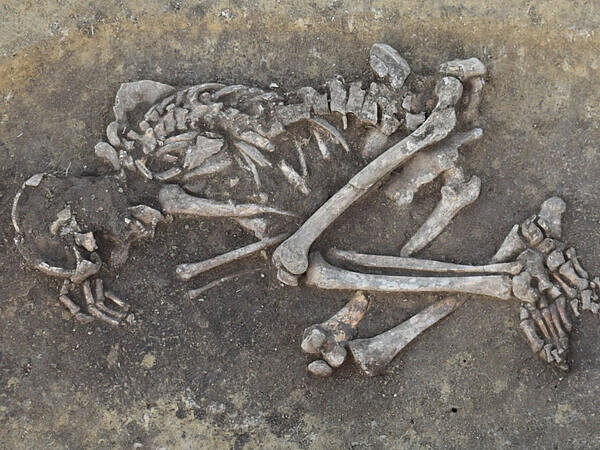Austria's oldest plague victims were found in the course of an interdisciplinary analysis of Early Bronze Age burials in Drasenhofen. They date from the Early Bronze Age (c. 2000 BC) and are thus around 4,000 years old. Until now, finds from the Middle Ages were considered the oldest plague deaths in Austria. The now identified plague victims are two male individuals who died at the age of 23 to 30 and 22 to 27 years, they were buried not far from each other in the row-grave cemetery comprising a total of 22 graves.
Two different plague pathogens
The community was probably aware that they had died of a contagious disease."
"Their graves are in peripheral locations, so the community was probably aware that they had died of a contagious disease," says archaeologist Katharina Rebay-Salisbury of the Austrian Archaeological Institute of the Austrian Academy of Sciences (OeAW). Rebay-Salisbury, who also conducts research at the University of Vienna, and six other scientists have just published the results of the study in the journal "Archaeologia Austriaca", published by the OeAW.
How was the plague diagnosed? In cooperation with the Max Planck Institute for Evolutionary Anthropology in Leipzig, genetic relationships among the dead were first investigated. Surprisingly, these also yielded evidence of the plague pathogen Yersinia pestis. Samples were taken specifically from the inside of the tooth crowns, as blood vessels run here and allow the detection of pathogens that were in the blood at the time of the individual's death.
Despite the spatial and temporal proximity, the genetic analyses of the two dead bodies revealed two different types of plague bacteria. It is therefore not an infection transmitted within the Bronze Age group, but two separate infection events.
More men than women affected by plague
We assume infection routes such as droplet infections or the consumption of infected meat."
"Unlike later in the Middle Ages, the plague may not have been transmitted via fleas, as the early plague bacteria lacked important genetic characteristics for this. Therefore, we assume other infection routes such as droplet infections or the consumption of infected meat," says Rebay-Salisbury. The fact that the victims are two men is quite symptomatic: "We observe in the compilation of all plague victims published so far in later prehistory in Eurasia that more men than women died of the plague," says Rebay-Salisbury. 27 male deaths are compared to 11 female deaths. The reason for this imbalance still needs to be investigated.
Plague is a zoonosis, a disease that can be transmitted from animals to humans. The men could have been shepherds, or they could have been exposed to the plague pathogens in the context of transhumance or transhumant pastoralism, an accompaniment of herds to alpine pastures according to the seasons. Contact with wild animals, for example in connection with hunting, seems possible. Participation in military campaigns could also have accelerated the spread of the plague.




